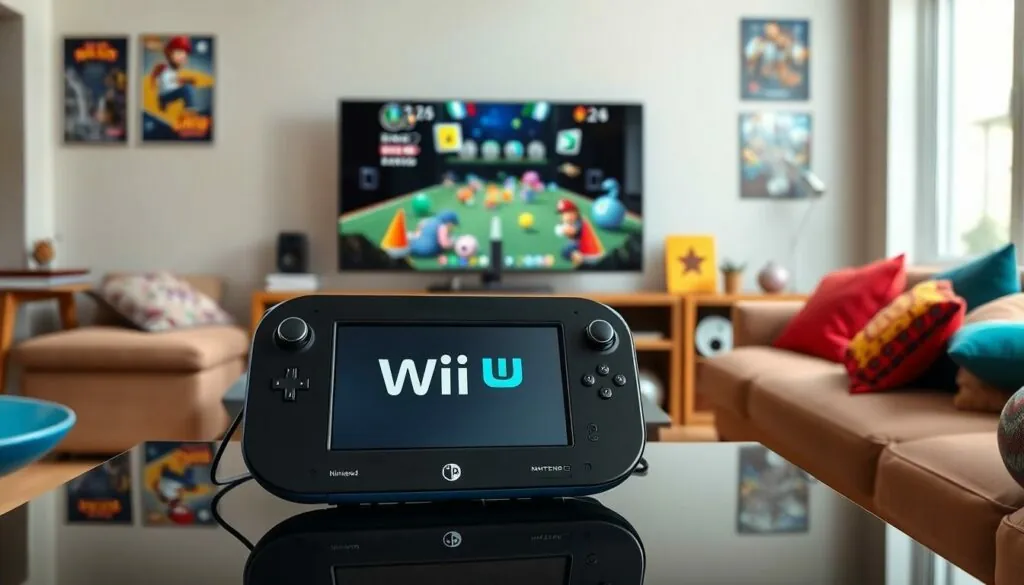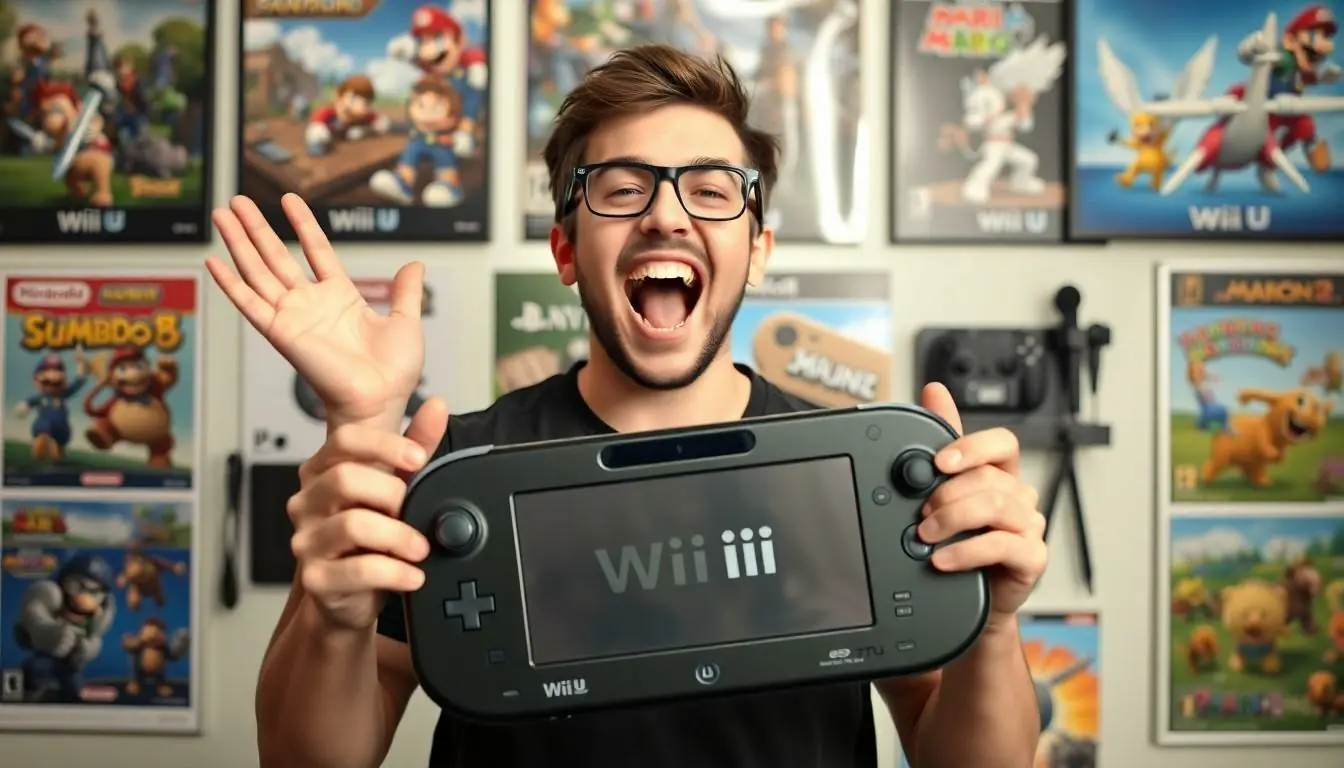The gaming world saw a curious twist when the Wii U rolled onto the scene. Released in late 2012, it promised a blend of innovation and nostalgia that had gamers buzzing. But let’s be real, it’s not every day a console tries to bridge the gap between casual and hardcore gaming, all while sporting a tablet-like controller.
Table of Contents
ToggleOverview of the Wii U
Nintendo launched the Wii U in November 2012, marking a significant evolution in gaming technology. The console aimed to blend casual gaming with more intense experiences, a strategy that garnered considerable attention from gamers and industry professionals.
Historical Context
The Wii U emerged during a shift in the gaming landscape. Rival consoles like the PlayStation 3 and Xbox 360 had established dominance, focusing on high-definition graphics and robust online gaming features. Nintendo sought to carve a niche by introducing a unique dual-screen experience, allowing for gameplay that could occur on the television or the Wii U GamePad. This approach intended to attract a broad range of gamers, from casual to hardcore.
Development and Announcement
Nintendo unveiled the Wii U at E3 2011 in Los Angeles. The company showcased its innovative controller, which featured a 6.2-inch touchscreen, stirring excitement among the audience. During its development, Nintendo aimed to enhance family gaming experiences while still appealing to traditional gamers. The initial announcement set the stage for a console that promised to redefine how players interacted with games.
Release Date of the Wii U
The Wii U made its debut in late 2012, marking a new chapter in Nintendo’s gaming history. This release was strategically timed to compete against other major gaming consoles.
North American Release
In North America, the Wii U launched on November 18, 2012. Gamers had two options: the Basic Set and the Deluxe Set. Each set offered different storage capacities, with the Basic featuring 8 GB and the Deluxe providing 32 GB. Enthusiasts eagerly anticipated the launch, driven by the console’s innovative features like the GamePad. Specific promotional events helped build excitement, ensuring strong initial sales.
European and Japanese Releases
Europe and Japan followed closely, with the Wii U releasing on November 30, 2012. In Japan, the launch occurred earlier, on December 8, 2012. Major retailers in both regions offered bundles and special promotions to attract consumers. The dual-screen gameplay feature appealed to many fans, enhancing the gaming experience. This introduction made a significant mark in various markets, reinforcing Nintendo’s commitment to unique gaming experiences.
Features of the Wii U
The Wii U introduced several innovative features that set it apart from competitors.
Gamepad Innovations
GamePad innovations contributed significantly to the console’s appeal. The 6.2-inch touchscreen enhanced gameplay by allowing players to interact directly with the game, offering a dual-screen experience. Control schemes included traditional buttons along with motion sensors, creating diverse gameplay options. Nintendo emphasized local multiplayer experiences, encouraging social engagements through shared screens. Unique functionalities, such as Off-TV Play, let gamers enjoy titles on the GamePad while someone else used the TV. These features attracted both casual and hardcore gamers, broadening Nintendo’s audience.
Software and Game Library
The software and game library featured a range of titles appealing to various demographics. Launch titles like Nintendo Land showcased multiplayer experiences effectively, combining mini-games that highlighted the GamePad’s features. Popular franchises, including Super Mario and The Legend of Zelda, received new releases on the Wii U, further enticing fans. Third-party developers also contributed, but the library faced criticism for lacking the volume of titles compared to competitors. By focusing on exclusivity and innovative gameplay, Nintendo aimed to create a memorable gaming experience that resonated with diverse audiences.
Reception and Legacy
The Wii U received a mixed response from critics and consumers alike. Unique features like the GamePad controller generated excitement, but some reviewers pointed to hardware limitations as drawbacks. Review scores averaged around 75% according to major outlets like Metacritic, indicating a blend of appreciation and critique. Many praised its innovative dual-screen gameplay, enhancing family-oriented experiences. However, others highlighted a limited game library at launch, which contributed to lower sales compared to expectations.
Critical Reception
Critical reception varied significantly across publications. Some outlets celebrated the innovative gameplay and interface, while others criticized the lack of third-party support. This inconsistency influenced its reputation; reviewers noted that although Nintendo’s exclusive titles shone, they weren’t enough to overcome competition from rival consoles. Launch titles like Nintendo Land received recognition for multiplayer engagement but faced scrutiny for not being as robust as offerings from competitors. Overall, enthusiasm existed for its potential, but it struggled to maintain momentum following initial sales.
Impact on Future Consoles
Nintendo’s approach with the Wii U shaped future console designs, especially regarding dual-screen functionality. Lessons learned from consumer feedback led to the innovative features in the Nintendo Switch, including portability and a hybrid design. The importance of strong software support became evident, guiding future development strategies. Focus shifted towards creating a diverse game library, appealing to both casual and hardcore gamers. As such, the Wii U’s legacy lies in its ability to influence Nintendo’s subsequent successes, paving the way for engaging and versatile gaming experiences.
Conclusion
The Wii U’s release in late 2012 marked a pivotal moment in gaming history. Its innovative approach combined casual and hardcore gaming, appealing to a wide audience. Despite facing challenges like a limited game library and mixed reviews, the console introduced groundbreaking features that influenced future designs.
The lessons learned from the Wii U’s journey helped shape the Nintendo Switch, emphasizing the importance of software support and versatile gameplay. While the Wii U may not have achieved the commercial success anticipated, its legacy continues to resonate, paving the way for more engaging gaming experiences in the years to come.







